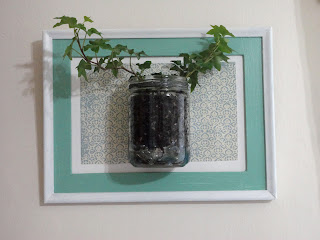Evening, friends of the mod salon. I’m finally done with my latest project, after a touch of indisposition, which I’m destroying with some Airborne and about 1,000,000 cups of tea, and some fun freelance work.
I was looking around my room for things I could
make more fabulous, and it was then that I took in my crumbly, sad windows for
the first time and realized how empty and forlorn they looked.
Windows can’t be forlorn; they’re like the eyes on which you’ve neglected to use a wrinkle-minimizing under-eye serum! Actually, that sounds creepy. FYI, though, if you’re looking for under-eye serum, I like Clinique’s All About Eyes Serum De-Puffing Eye Massage.
Windows can’t be forlorn; they’re like the eyes on which you’ve neglected to use a wrinkle-minimizing under-eye serum! Actually, that sounds creepy. FYI, though, if you’re looking for under-eye serum, I like Clinique’s All About Eyes Serum De-Puffing Eye Massage.
But that’s neither here nor there. The point
is, I’m on cold medicine so I’m not making a whole lot of sense right now, but
my heart is in the right place when it comes to having a desire for my windows
to get a bit of a Roman holiday...say, two and a half centuries back in time. The way Admiral Lord Nelson
needed Lady Emma Hamilton, my windows needed roman shades: bad.
Now I know you read in past posts that I
wanted to get my sewing machine and table together so I could do some projects
with fabric. But then I found this wonderfully detailed tutorial on how
to make roman shades from those cheap plastic adjustable blinds without having
to haul out the machine. I was sold.
Here’s what you need:
- Cheap plastic blinds
- Several yards of fabric (depending on the length and width of your windows)
- Heat N’ Bond or any brand of iron-on adhesive
- Fabric glue + paint brush for easier application
- Glue gun
- Scissors
Since there are so many steps to this
tutorial, I won’t repeat them all here. Essentially,
these take a little time and effort, but they’re pretty easy!
Measure the length and width of your windows
to figure out the dimensions you need, and cut the fabric to those dimensions,
allowing for an additional 2 – 2 ½” on each end for seams. My windows were 58” long and 30” wide so I
made my fabric about 62” long and 35” wide.
With your dimensions, you then figure out how
many plastic slats you need for the number of folds you want. Since my fabric
would more or less be about 60” long, I decided to make 10 folds, each 6”
apart. See, 10 folds x 6” = 60”. The Compleat Housewife would have been so
proud.
I’m not sure
if I seamed my edges the way the tutorial suggests, but I’ve always been taught
to twice-fold fabric to keep edges from fraying, so that’s what I did:
And now for the finale…
Ta da! The
fabric is neutral enough to go with the other colors in my room, but still has
a lovely, 18th-century inspired print that adds a nice pop of color
and design to my windows.
After making
these pretty shades, I realized I couldn’t put them up next to drab, white
metal curtain rods, so I found a pretty rod from Home Depot from the Martha
Stewart Living collection.
My window feels glam now, and every time I walk in my room, I do too. Huzzah for the mod 18th century!
My window feels glam now, and every time I walk in my room, I do too. Huzzah for the mod 18th century!

































